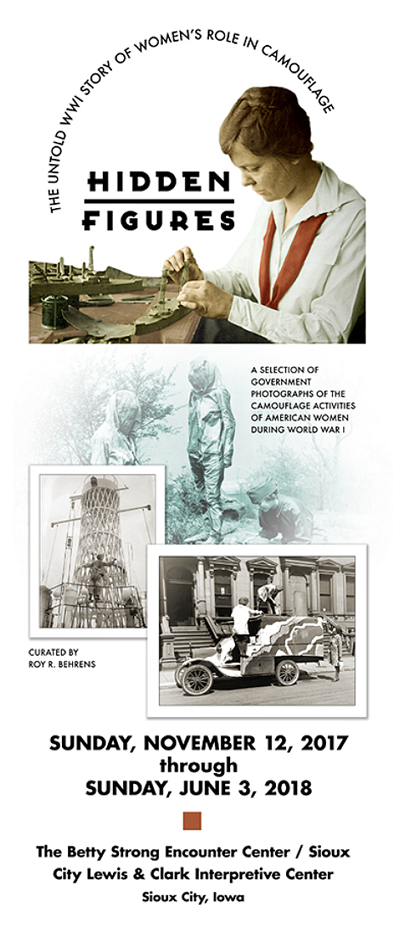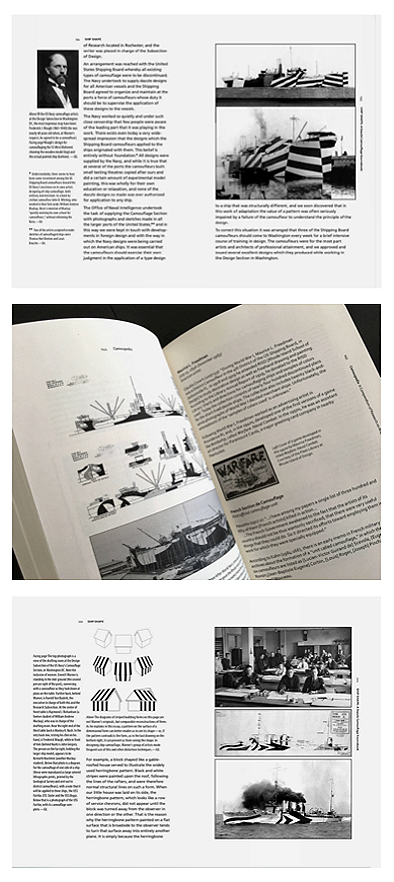 |
SS Suevic, British steamship
|
C.C. Brainerd, DAZZLE PAINTING ISN'T CAMOUFLAGE; CAN'T CONCEAL SHIPS. But A conglomeration of Colors Can, and Does. Puzzle U-Boat Pirates. HAS SAVED MANY A CRAFT, in Brooklyn Daily Eagle, July 14, 1918, p. 2—
Washington, July 13—Often Washington hears the echo of talk among people at the Atlantic seaports, who see odd things when a ship or a convoy sets sail for Europe or returns to these shores. These people see things that look like a hasheesh dream; strange objects of extraordinary colors moving along in the water, that finally resolve themselves into ships. And the talk that follows is generally to the effect:
"Well, if that's what they call camouflage, it's nothing but insanity. Nobody can help spotting a ship that looks like that. It simply shouts at you."
The Washington naval and marine experts smile when they hear that sort of comment. In a general way, they admit the criticism—the ship does shout at you. But they point out that shouting may be so loud as to be confusing; and that is exactly the theory on which they paint ships nowadays. They do not try to conceal them; that has been tried and found impossible. So they have resorted to confusion, rather than concealment. And they do not call it camouflage; they call it dazzle painting.
Can't Conceal Ships at Sea
When the Ancient Mariner said: As idle as a painted ship / Upon a painted ocean, he may have had the modern scheme of dazzle painting in mind. But he was wrong on one or two points. The painted ship of today is far from idle and it does not sail on a painted ocean. If it were possible to paint the ocean, ship concealment would be easy. On shore, where the armies practice camouflage, it is possible to alter and dress up the background so as to assist in concealing an object. But at sea the background must always remain the same. Water and sky meet at the horizon, and that is all there is to it.
Early in submarine warfare it was learned that ships of solid color, no matter what it was, were comparatively easy to pick out. Experiments were made with various neutral tints, the favorite being the battleship gray so long employed in navies. Conspicuous shades, like white, were avoided, as a matter of course, but nevertheless the submarines found easy picking. The ship in her normal garb was readily identified as to size, character, speed, direction and other elements entering into the problem of shooting a torpedo at her. Try as they would, it was not possible for the marine experts to make the ship invisible, or even semi-visible. Thomas A. Edison was one of the famous inventors who tried his hand at the problem, and without much success.
Dazzle Painting Nearly a Science
Having discovered that it was of little or no use to attempt conceal-ment by the use of paint, the marine sharps began studying the problem of trying to confuse the eyes of the submarines, and they soon learned that here was a promising field of endeavor. So they plunged into the realm of dazzle painting, until it has now become considerable of a science. One ship, they found, will lend itself to a certain style of treatment, depending upon her size, shape and speed, while another vessel must be painted in an entirely different sort of way. It is desirable, too, to maintain a wide variety of styles, so that submarine commanders may not become accustomed to a particular thing.
Sometimes a large ship will go to sea with the image of a smaller ship painted on her side, the latter image standing out as the conspicuous feature of the painting. At a distance of five or ten miles such a vision has been found to be decidedly confusing, particularly in a rough sea and thick weather. The submarine commander often thinks he sees one kind of a ship when he is looking at another. Further than that, by the employment of dazzle paint, he may be deceived into thinking that a ship is approaching him head on, when as a matter of fact, it is broadside to him.
Aim Is to Puzzle Pirates
There are so many varieties of dazzle painting that there seems to be no regular rule about it, although certain broad principles are followed. The mere fact that it is not an exact science is one of its strong points, in the matter of ship protection. Sometimes plain black and white or gray tints are employed. Again, the most vivid colors are used—reds, yellows, green, etc. Some ships of [unclear] stripes and some in spots, of all sizes and shapes. Two ships of identical size and build may be painted in an entirely different manner, so that the submarine pirate finds it impossible to lay down any general classification.
It is undoubtedly true that many of the dazzle painted ships are more conspicuous in their war colors than they would be if dressed up in the sane and normal way. But that does not make them easy marks for, a submarine; it makes them more difficult to hit. The "sub" commander sighting one of these vessels is often in doubt for a considerable time as to just which way his prospective victim is headed, how big she is, and how fast she is moving, although these are things that he must know to a certainty if he hopes to make a successful attack. And while he is trying to make head or tail out of the confusing object on the horizon he often loses the precious opportunity. The ship, by her dazzle paint, confuses him until it has passed beyond the danger point. This, of course, is by no means always the case, but it has happened sufficiently often to prove that dazzle painting is worth while. The purpose constantly in the mind of the dazzle painters is not to hide the ship, but to turn it into such an apparition that it dazzles the eye and upsets the calculations of the German who is trying to plot its range, its course and its speed.
RELATED LINKS
Dazzle Camouflage: What is it and how did it work? / Nature, Art, and Camouflage / Art, Women's Rights, and Camouflage / Embedded Figures, Art, and Camouflage / Art, Gestalt, and Camouflage / Optical science meets visual art / Disruption versus dazzle / Chicanery and conspicuousness / Under the big top at Sims' circus
 |
Roy R. Behrens, Camoupedia
|

































